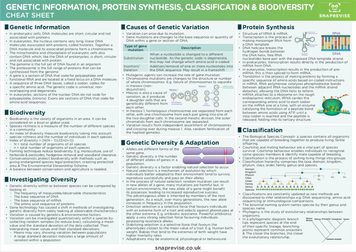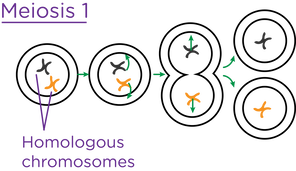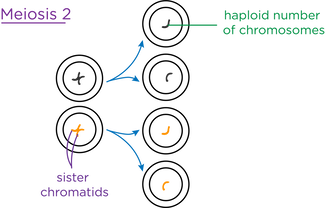A-LEVEL BIOLOGY AQA NOTES
genetic diversity can arise as a result of mutation or during meiosis
Causes of Genetic Variation
- Variation can arise due to mutation
- Gene mutations are changes to the base sequence or quantity of DNA within a gene or section of DNA.
Type of gene mutation |
Description |
Substitution |
When a nucleotide is changed to a different nucleotide. As the genetic code is degenerate, this may not change which amino acid is coded |
Insertion/ Deletion |
Addition/removal of one or more nucleotides into the DNA sequence. May result in a frameshift |
- Mutagenic agents can increase the rate of gene mutation
- Chromosome mutations are changes to the structure or number of whole chromosomes. E.g. failure of chromosomes to separate in meiosis (non-disjunction).
- Meiosis is also a cause of variation, as it produces 4 daughter cells that are genetically different from each other.
- In meiosis 1, homologous chromosomes are separated from each other, with one chromosome from each pair going into one of the two daughter cells. In the second meiotic division, the sister chromatids from each chromosome are separated
- Variation results from independent assortment of chromosomes and crossing over during meiosis 1. Also, random fertilisation of the haploid gametes



